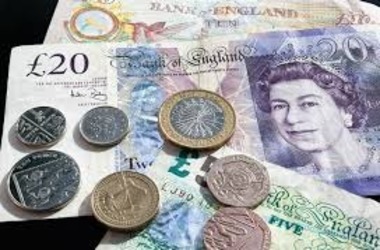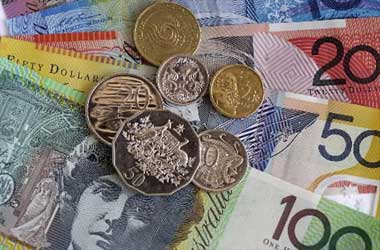 The pound declined to seven-week low of 1.3677 against the greenback on intense selling pressure, before regaining some of the lost ground to trade at about $1.37 after the recent data indicated that the UK’s inflation rate unexpectedly declined. Consumer prices increased only 0.4% in February as clothes and footwear prices declined the most since 2009 due to additional discounts offered during the recent lockdown.
The pound declined to seven-week low of 1.3677 against the greenback on intense selling pressure, before regaining some of the lost ground to trade at about $1.37 after the recent data indicated that the UK’s inflation rate unexpectedly declined. Consumer prices increased only 0.4% in February as clothes and footwear prices declined the most since 2009 due to additional discounts offered during the recent lockdown.
In the meanwhile, the IHS Markit flash PMI data indicated that business activity across the UK’s private sector returned to expansion in March following two months of negative growth, driven by the quickest rise in service activity since August 2020 and as manufacturing activity expansion expedited to a 40-month high.
After recording a three-year high of $1.41 in the final leg of February on the extraordinary pace of immunizations, the pound has come under selling pressure against the backdrop of an overall risk off sentiment as the Europe is struggling to cope up with vaccination program and warned of a total prohibition on vaccine exports.
Annual inflation in the UK slowed down to 0.4% in February, from 0.7% in January, and missed economists’ forecasts of 0.8%.Clothing and footwear posted a negative 5.7% growth in February, compared with a negative 3.4% in January. The reported figure reflects the steepest yearly decline since November 2009. Second-hand cars posted a growth of 3.5% in February, following an expansion of 7.8% in the prior month.
Likewise, games, toys and hobbies recorded a growth of 7.4% in February, a slight decline from the 8.4% growth reported in the earlier month. On the contrary, motor fuels, housing grew 1.8% and matched the expansion in January. Core inflation also eased to 0.9% in February, from 1.4% in January. The Bank of England anticipate inflation to increase towards the BoE’s 2% target in the initial half of 2021, primarily due to oil prices, regulated household energy prices and other one-time impacts.
Factory gate prices of goods manufactured in the UK rose by 0.9% y-o-y in February 2021, reflecting the second consecutive monthly rise and the largest since January 2020, following an amended 0.1% increase in the earlier month and surpassing economists’ anticipations of a 0.3% growth. Food products offered the biggest contribution of 0.44% by recording a growth of 1.7%, led by prepared animal feeds for the local market.
The second biggest contribution of 0.34% came from other manufactured goods, reflecting a positive yearly price growth of 1.4%, led by wood, straw, cork, and plaiting materials for the local market. On m-o-m basis, producer prices increased 0.6%, slowing down from an upwardly amended 0.8% gain in the last month but surpassing market forecasts of a 0.3% growth.
As per IHS Markit, the flash UK manufacturing PMI rose to 57.90 in March, from 55.10 in February, surpassing forecasts of 55. The reading indicated the robust increase in factory activity since November 2017.
Production growth hit the strongest level since the end of 2020. Fresh orders also rose at the quickest rate for three months, in spite of another comparatively weak increase in exports. Expectations of a continuous revival in customer demand paved way for robust employment and the record high (since April 2014) business optimism about the forthcoming 12 months.
Data published by the IHS Markit indicated that the UK services PMI reading is 56.80 in March, an increase from 49.50 in February and higher than economists’ anticipations for a reading of 51. The recent reading reflects the first growth in the services sector since October.
Furthermore, the pace of business growth was the robust since August 2020. The latest data also mirrored a return to a rise I fresh orders and employment throughout the service economy. Service providers broadly reported on rising consumer confidence and indications of pent-up demand. Anticipations of increasing sales following the countrywide lockdown and an improvement in sentiment from the roll out of Covid-19 vaccine, paved way for an improvement in business sentiment to the highest level since January 2004.
In a separate news release, the IHS Markit stated that the Composite PMI rose sharply to 56.60 in March, from 49.60 in February, reflecting an expansion for the first time in three months. A reading below 50 indicates contraction and vice-versa. The figure hinted a strong pace of private sector output increase and the pace of rebound was the quickest since August 2020.
Since the outbreak of Covid-19, for the first-time, service sector activity index reading of 56.80 eclipsed the growth of manufacturing production index reading of 55.60. The growth was stoked up by an increase in fresh orders for the foremost time since September 2020, which poll participants ascribed to a revival in sales before relaxing lockdown initiatives, in addition to robust consumer confidence and a jump in demand for residential property services.



